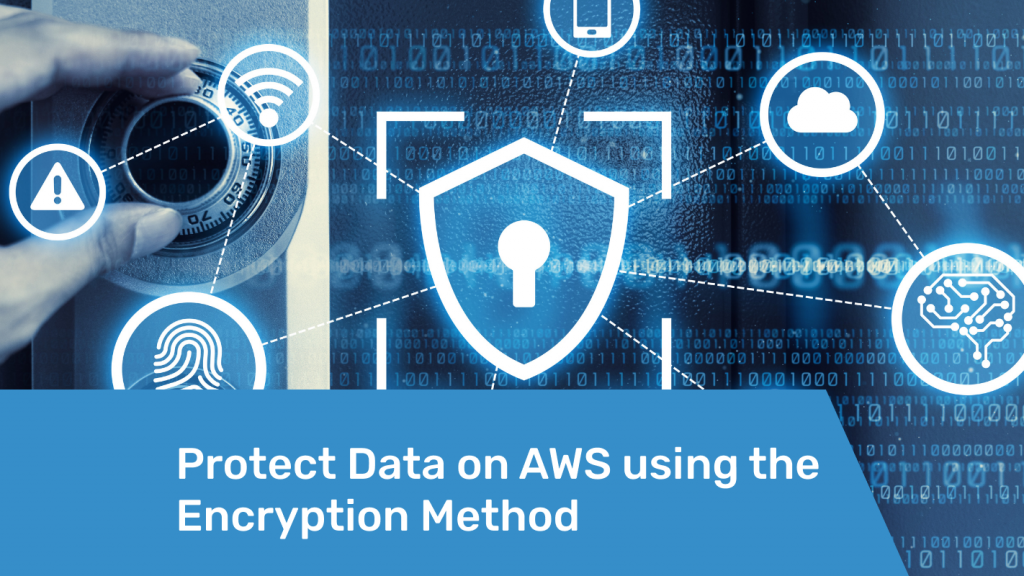With so much data being stored on cloud platforms like AWS (Amazon Web Services), it’s essential to take extra precautions to ensure that your information is secure. One of the best ways to protect your data on AWS is by using encryption.
What is Encryption?
Encryption is the process of converting plain text into a secret code that only authorized parties can understand. By encrypting your data, you can rest easy knowing that even if it falls into the wrong hands, it will be unreadable. Encryption algorithms use complex mathematical computations to scramble the data into an unreadable format that can only be deciphered by someone with the appropriate decryption key. Encryption is widely used to protect data in transit, such as internet traffic or email communication, as well as data at rest, such as stored files and databases.
Encryption Types
1. Encryption on Flight or SSL (Secure Sockets Layer)
Is a method of encrypting data that is transmitted over the internet. When you visit a website using SSL encryption, your browser and the website’s server establish a secure, encrypted connection. This connection is authenticated using digital certificates issued by Certificate Authorities (CAs). Sensitive data, like passwords, credit card numbers, and other personal information, are safeguarded from being copied and stolen by unauthorised users.

2. Client-Side Encryption (CSE)
Is a security feature used to protect data before it is uploaded to a server or cloud storage service. There are several types of CSE, including symmetric encryption and public key encryption. You can encrypt your data before you upload it to Amazon Web Services. AWS provides a client-side encryption library called the AWS Encryption SDK, which makes it easy to encrypt your data before uploading it to AWS. One potential drawback of CSE is that it could be more complex to implement than server-side encryption, but we are always here to satisfy any of your requests.

3. Server-Side Encryption on rest (SSE)
Is a security feature that protects data stored on a server or in a cloud storage service. When SSE at rest is enabled, the data is encrypted before it is stored on disk, making it unreadable to anyone without the encryption key. This encryption process is transparent to the user, who can access and manipulate the data in the same way as if it were unencrypted. It helps organizations comply with data protection regulations and industry standards.

There are several types of SSE at rest, including S3, KMS, and C, which use different encryption keys and key management processes.
We can help you to choose the type of SSE at rest that best meets your security and compliance needs.

AWS Services that Support Encryption
1. EBS Encryption
Amazon Elastic Block Store (Amazon EBS) is a web service that provides block-level storage volumes for use with Amazon Elastic Compute Cloud instances. Amazon EBS volumes are highly available and reliable storage volumes that can be attached to any running instance and used like a hard drive.
You get the following when you create an encrypted EBS volume:
- Data at rest is encrypted inside the volume;
- All the data in flight moving between the instance and the volume is encrypted;
- All snapshots are encrypted;
- All volumes created from the snapshot;
- Encryption and decryption are handled transparently;
- Encryption has a minimal impact on latency;
- EBS Encryption leverages keys from KMS (AES-256);
- Copying an unencrypted snapshot allows encryption;
- Snapshots of the encrypted volume are encrypted.
2. S3 Encryption
Amazon Elastic Block Store (EBS) is a block-level storage service provided by Amazon Web Services (AWS) for use with EC2 instances. EBS volumes are used to store persistent data for EC2 instances and are designed for high availability and durability.
You can encrypt objects in S3 buckets using one of 4 methods:
- Server-Side Encryption (SSE) with Amazon S3-Managed Keys (SSE-S3) – Encrypts S3 objects using keys handled, managed, and owned by AWS;
- Server-Side Encryption with KMS Keys stored in AWS KMS (SSE-KMS) – Leverage AWS Key Management Service (AWS KMS) to manage encryption keys;
- Server-Side Encryption with Customer-Provided Keys (SSE-C) – When you want to manage your own encryption keys;
- Client-Side Encryption.
You can learn more about each S3 Encryption method by watching our workshop on YouTube:
Compliance Considerations
You might be under different regulatory obligations requiring particular encryption standards and procedures, depending on your region. For example, the Health Insurance Portability and Accountability Act (HIPAA) mandates that protected health information (PHI) be encrypted in transit and at rest.
For example, the Health Insurance Portability and Accountability Act (HIPAA) mandates that protected health information (PHI) be encrypted in transit and at rest.
As for the GDPR, it does not specify a particular type of encryption that organizations must use. Instead, the GDPR requires that organizations implement appropriate technical and organizational measures to ensure a level of security appropriate to the risks presented by the processing of personal data. However, when it comes to selecting an encryption method for GDPR compliance, it’s important to choose an encryption solution that provides strong protection for personal data. In general, strong encryption methods such as Advanced Encryption Standard (AES) and RSA encryption are recommended.
AWS offers a range of compliance certifications:
- SOC 2,
- SOC 3,
- ISO 27001,
- PCI DSS,
- HIPAA, and many others.
These certifications demonstrate that AWS has implemented rigorous security controls and practices that comply with industry and regulatory requirements.
Let us help you to implement the right certifications!
Let’s discuss your challenges!
Final Words
We – ZenBit company can assist you with successfully implementing encryption to guarantee security and shield you from potential threats. With our expertise we can provide tailored solutions to meet specific needs, ensuring that your data is secure and compliant with industry regulations.
Even if data is accessed by unauthorized individuals, it remains unreadable and unusable to them. By implementing encryption on AWS, you can significantly reduce the risk of data breaches and protect your reputation and customer trust.
FAQ
It is the process of transforming data into an unreadable format so that it can only be read by someone with the decryption key.
- AWS Key Management Service (KMS);
- AWS CloudHSM;
- AWS Certificate Manager;
- Amazon S3 Server-Side Encryption;
- AWS Transit Gateway Network Manager;
- AWS CloudTrail.
- Implement server-side encryption;
- Enable multi-factor authentication;
- Use the least privilege access;
- Enable logging and auditing;
- Regularly rotate encryption keys.






